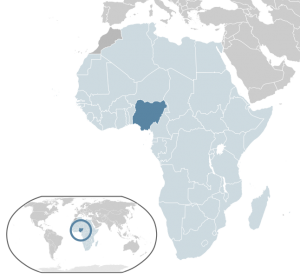NewsDesk @infectiousdiseasenews
For the second week in a row, Nigerian health officials reported 48 confirmed Lassa fever cases in the country, bringing to total confirmed cases to 96 through January 16.

Cases this past week were reported from Edo, Ondo, Bauchi, Benue, Kogi, Oyo, Taraba and Ebonyi States.
In total for 2022, 11 States have recorded at least one confirmed case across 27 Local Government Areas.
Of all confirmed cases, 74% are from Edo (31%), Bauchi (22%), and Ondo (21%) States.
Eleven confirmed Lassa fatalities were reported to date in 2022.
Lassa fever is an acute viral hemorrhagic fever (VHF) caused by the Lassa virus. The natural reservoir for the virus is the Mastomys natalensis rodent (commonly known as the multimammate rat) but other rodents have also been identified as carriers of the virus. The virus is spread through:
1. Direct contact with urine, feces, saliva or blood of infected rats.
2. Contact with objects, household items and surfaces contaminated with urine, faeces, saliva or blood of infected rats.
3. Ingesting foods contaminated with urine, feces, saliva or blood of infected rats.
4. Person-to-person transmission can also occur through contact with blood, urine, feces, vomitus and other body fluids of an infected person
Lassa fever initially presents like any other febrile illness such as malaria. Its symptoms include fever, headache, sore throat, general body weakness, cough, nausea, vomiting, diarrhea, muscle pains, chest pain, and in severe cases, unexplainable bleeding from ears, eyes, nose, mouth and other body openings. The time between an infection and appearance of symptoms of the disease is 6 to 21 days. Early diagnosis and treatment increase the chances of survival.
Subscribe to Outbreak News TV on YouTube
People most at risk are:
1. People of all age groups who come in contact with the urine, feces, saliva or blood of infected rats
2. People living in rat infested environments
3. People who consume potentially contaminated food stuff especially those left open overnight or dried outside in the open
4. People who handle or process rodents for consumption
5. People who do not perform hand hygiene when appropriate
6. Caretakers of infected persons with poor infection prevention and control measures
7. Health care workers including:
a. Doctors, nurses and other health workers providing direct patient care in the absence of standard precautions.
b. Hospital staff who clean and disinfect contaminated surfaces, materials and supplies without adequate protective gear
c. Laboratory staff who handle blood samples of suspected Lassa fever patients without appropriate precautions
d. Medical or support staff who prepare and or handle dead bodies without appropriate precautions


2 thoughts on “Nigeria reports nearly 100 confirmed Lassa fever cases in first two weeks of 2022”